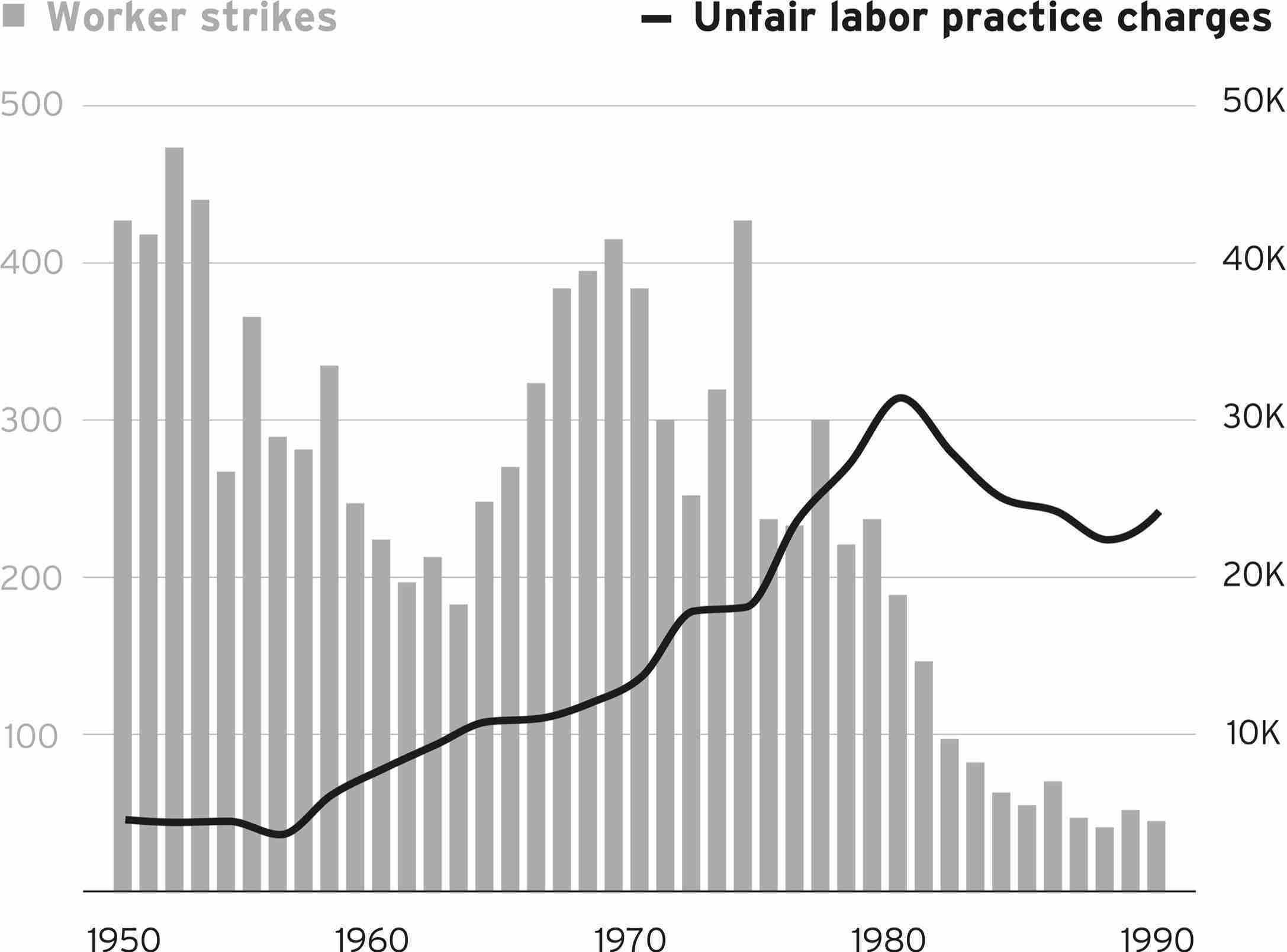Labor Loses Its Voice
In 1950, nearly 1 in 3 American non-farm workers was represented by a union, which gave them the ability to organize and exercise bargaining power against powerful employers. And exercise power they did: That year, the U.S. experienced 424 strikes involving more than 1,000 workers. But labor actions declined dramatically beginning in 1980, and by 1988 there were just 40 such stoppages.
Labor actions improved working conditions and wages, but the union movement didn’t fade away on account of its success: Unfair labor practice charges remained well above the historical average through the 1980s. A range of factors caused the decline in union power—including corruption and overreaching by unions themselves—but the result was a power shift . . . from labor to capital.
05

Worker Strikes and Unfair Labor Practice Charges

Sources: Bureau of Labor Statistics, National Labor Review Board, Economic Policy Institute.
Note: Strikes involving 1,000 or more workers.